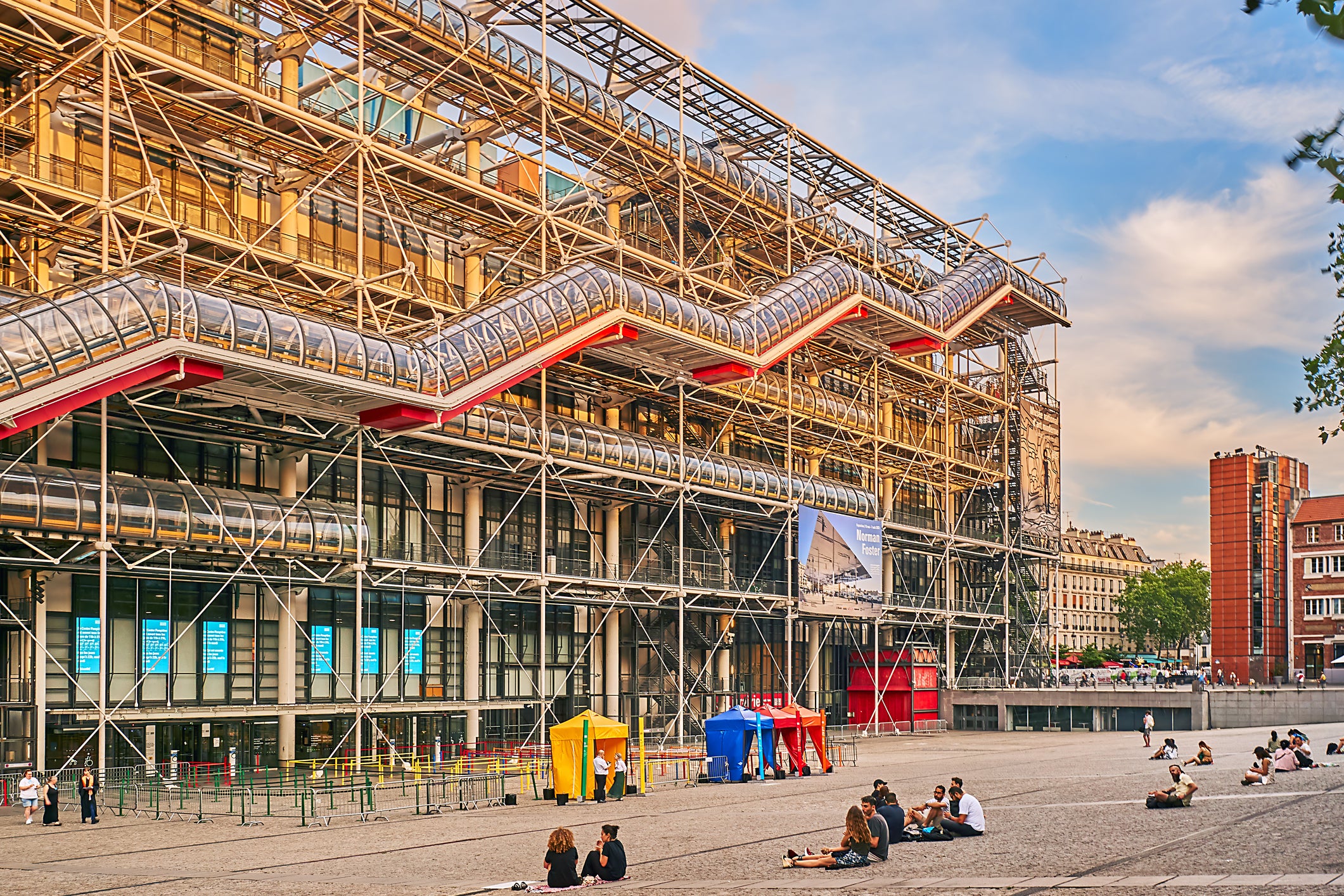Please don’t screw with the Pompidou
Paris’s postmodern landmark is to close for refurbishment for five years – almost as long as it took to build – and while its exterior, with its famous ‘caterpillar’ escalator, will escape mostly untouched, John Grindrod is worried how the iconic gallery might be dramatically ‘updated’


France is having a bit of a summer, isn’t it? Massive political turmoil; Macron’s sudden call for elections; the Paris Olympics landing in just over a month. But there’s more change coming to the heart of the capital.
Yesterday, architects unveiled plans for the Pompidou Centre – plans so big, they’ll require it to be shut for a colossal five years, and partially closed for seven – as long as it originally took to build.
Back in 1971, the team of Richard Rogers, Su Rogers and Renzo Piano unexpectedly won an international design competition for a vast museum and library. It was chosen at a time when Paris was still reeling from the protests of 1968, and there was a feeling that this new centre needed to feel open and accessible and of the people, not of the establishment. The architects – then a hippyish bunch of relative youngsters – seemed to represent a new order, their design a demonstration of fresh thinking that was desperately needed.
Now, more than 50 years later, it still retains power to delight and surprise, its futuristic stylings quite at home in an age of new technology and political twists.
With its bright colour coding, the Pompidou has a mad inventor’s toy box quality that’s easy to get excited about. Its most familiar feature, the huge tube escalator on the exterior known as the caterpillar, is so famous it’s now become the centre’s logo. It was the first large-scale high tech building, a form of modernist architecture that was all about using lightweight materials and making a star feature of its engineering. The idea here was to create as open a box as possible on the inside, with all of the services – cabling, structural supports, stairs and the like – kept to the outside skin.
It’s a flexible framework that can be endlessly adapted, established as a place where art could help transform society. And most of all, it’s fun, encapsulating a kind of wacky Monty Python spirit of the age, modernism at its most outrageous. And it did cause outrage. Critics found it monstrous, industrial and unfinished. But when it became a sudden hit, attracting five times more visitors than planned, the centre found itself woven in the cultural fabric of the city, just as the designers had hoped.
Of course, some of it has aged. These early high tech buildings are notoriously creaky and leaky. It’s also incredible how much clutter accrues over time, and any refurbishment will be a welcome moment to refresh all those chaotic pieces of signage and workarounds. This was something brilliantly handled by architects Feilden Clegg Bradley when they renovated the brutalist South Bank Centre in London, a building of a similar vintage, optimism and oddness. But what’s planned for the Pompidou goes far beyond that.
Five years closed is not just a lick of paint and some asbestos removal. Architects Moreau Kusunoki and Frida Escobedo are talking a lot about “transparency”, bringing in more light by opening up floors, creating a new entrance, dramatically reconfiguring the entire innards of the building. There is talk of introducing “movable partitions”, better to reconfigure floors in order to host live shows; a children’s zone; and – biggest gulp – an area with two giant circles carved into the floor that can act as a “calm, gathering space”.
All of this is utterly in the spirit of a place designed to be endlessly adaptable, of course – but a lot is riding on it.
It’s not just the character of a place that generations of Parisians and tourists have been delighted by, but also the generous spirit of the Pompidou – somewhere you can hang out no matter if you have money to spend or not.
For a glimpse of what it was like back in 1977, Roberto Rossellini’s documentary Beaubourg (available on YouTube) captures that moment perfectly. It’s a free-form meander, the visitors jostling, whispering and bitching, trying to make sense of the strange new building and its overwhelming contents.
When it re-opens in 2030, we can use it to check how much of the spirit of the Pompidou remains.
John Grindrod is author of Iconicon: A Journey Around the Landmark Buildings of Contemporary Britain (Faber, £10.99)






Join our commenting forum
Join thought-provoking conversations, follow other Independent readers and see their replies
66Comments